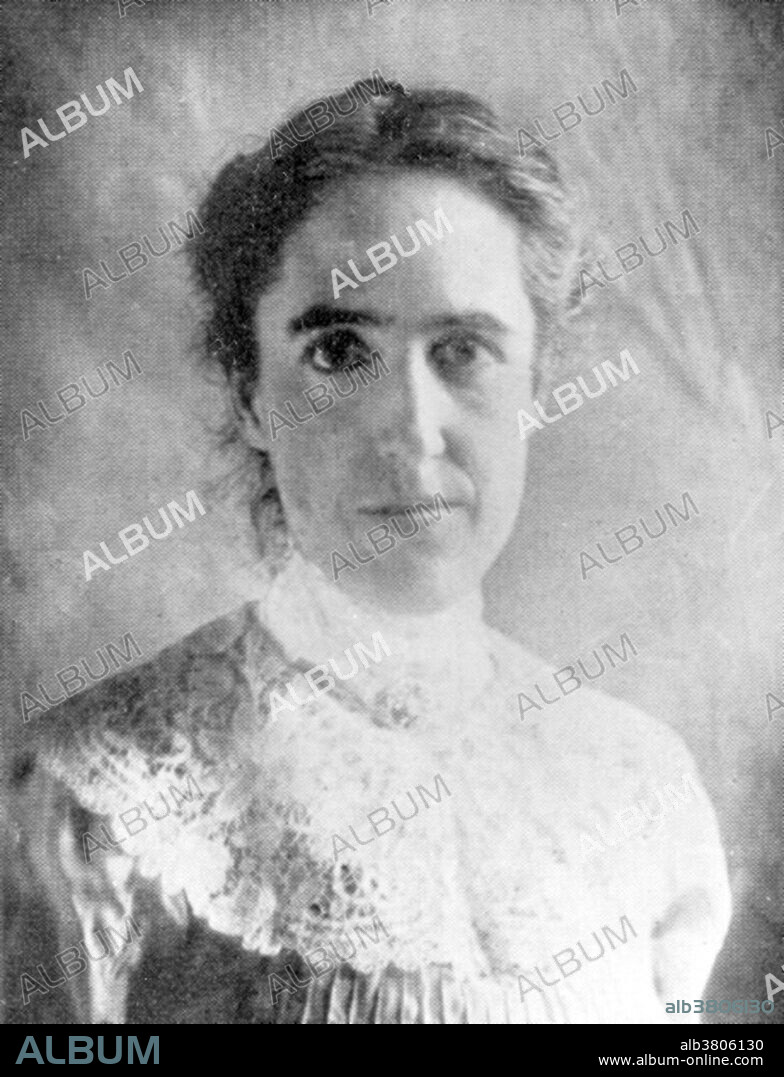alb3806130
Henrietta Leavitt, American Astronomer

|
Add to another lightbox |
|
Add to another lightbox |



Buy this image.
Select the use:

Title:
Henrietta Leavitt, American Astronomer
Caption:
Henrietta Swan Leavitt (July 4, 1868 - December 12, 1921) was an American astronomer who discovered the relation between the luminosity and the period of Cepheid variable stars. A graduate of Radcliffe College, she started working at the Harvard College Observatory as a "computer" in 1893, examining photographic plates in order to measure and catalog the brightness of the stars. Though she received little recognition in her lifetime, it was her discovery that first allowed astronomers to measure the distance between the Earth and faraway galaxies. She explained her discovery: "A straight line can readily be drawn among each of the two series of points corresponding to maxima and minima, thus showing that there is a simple relation between the brightness of the variables and their periods." Leavitt worked sporadically during her time at Harvard, often sidelined by health problems and family obligations. An illness contracted after her graduation from Radcliffe College rendered her increasingly deaf. In 1921, when Harlow Shapley took over as director of the observatory, Leavitt was made head of stellar photometry. By the end of that year she had succumbed to cancer and died at the age of 53.
Credit:
Album / Science Source
Releases:
Model: No - Property: No
Rights questions?
Rights questions?
Image size:
2640 x 3450 px | 26.1 MB
Print size:
22.4 x 29.2 cm | 8.8 x 11.5 in (300 dpi)
Keywords:
1868 • 1921 • 19TH CENTURY • 20 XX TWENTIETH CENTURY • 20TH CENTURY • 20TH • AMERICA • AMERICAN • ASTRONOMER • ASTRONOMY • BRIGHTNESS OF STARS • BW • CELEBRITIES • CELEBRITY • CEPHEID STAR • FAMOUS PEOPLE • FAMOUS • FEMALE • FIGURE • HARVARD COLLEGE OBSERVATORY • HARVARD COMPUTER • HENRIETTA LEAVITT • HENRIETTA SWAN LEAVITT • HISTORIC • HISTORICAL • HISTORY • IMPORTANT • LEAVITT • LUMINOSITY OF STARS • NOTABLE • PEOPLE • PERSON • PERSONALITIES • PERSONALITY • PHOTO • PHOTOGRAPH • SCIENCE • TWENTIETH CENTURY • UNITED STATES • US • USA • VARIABLE STAR • WELL-KNOWN • WOMAN • WOMEN
 Pinterest
Pinterest Twitter
Twitter Facebook
Facebook Copy link
Copy link Email
Email
